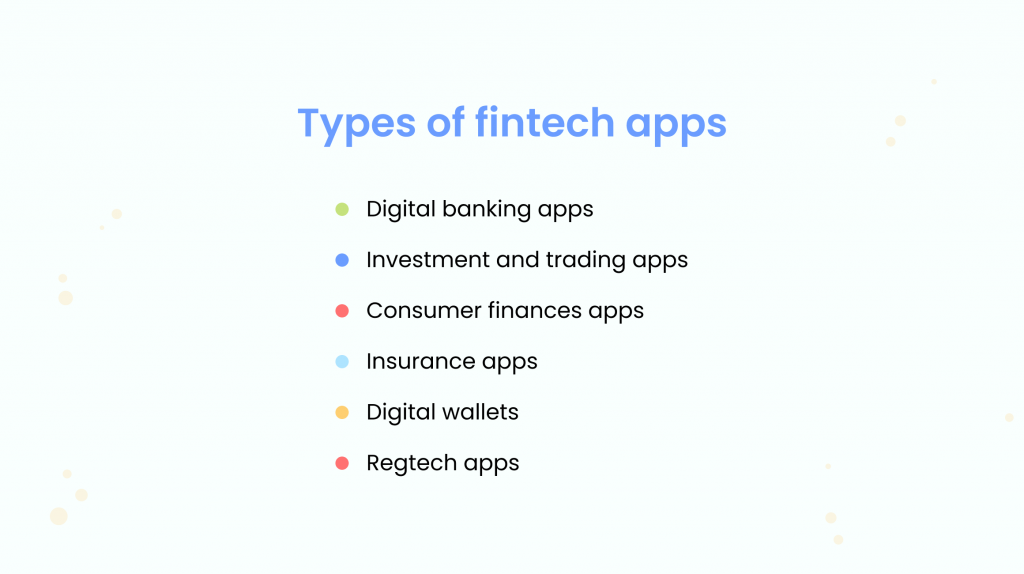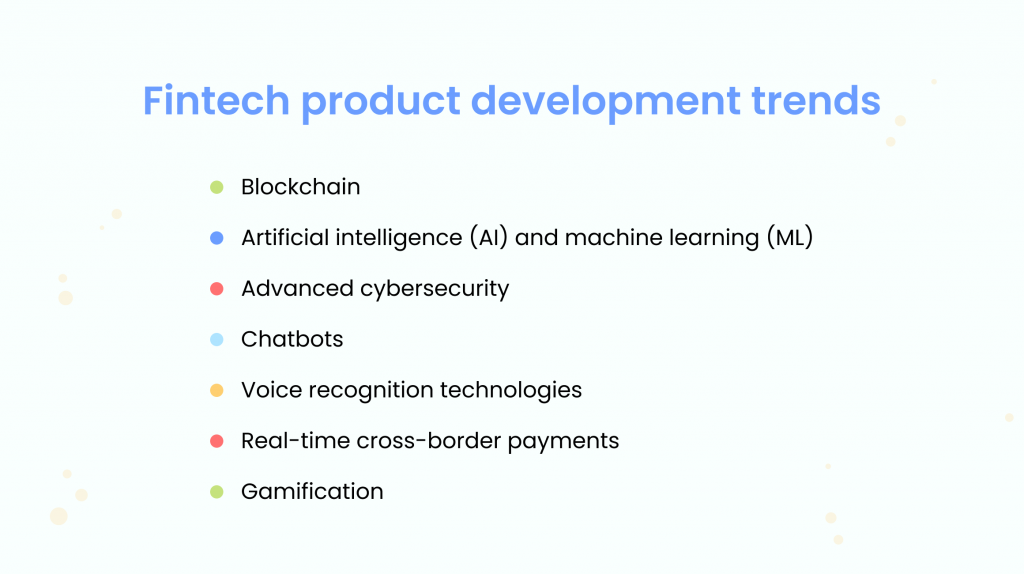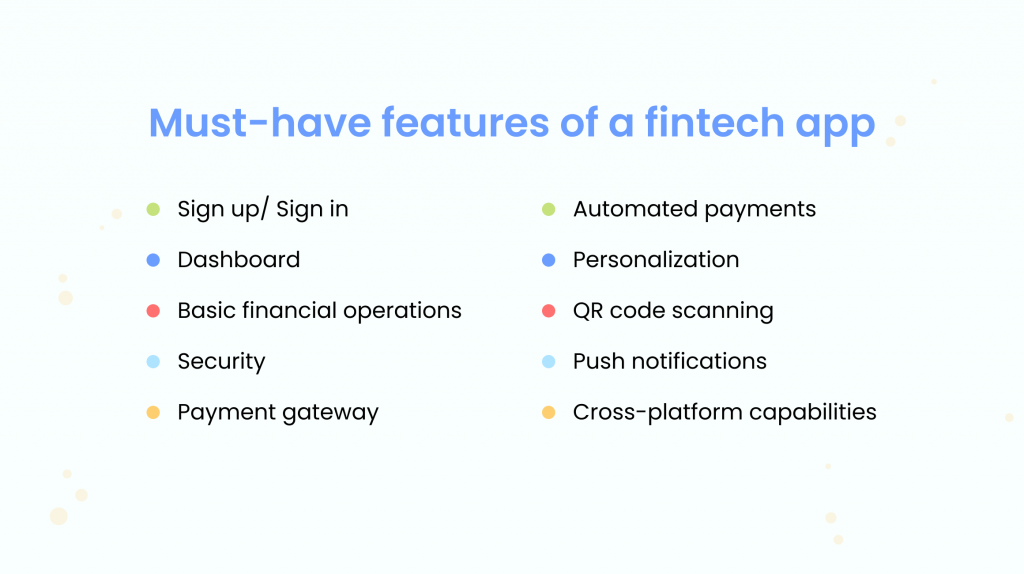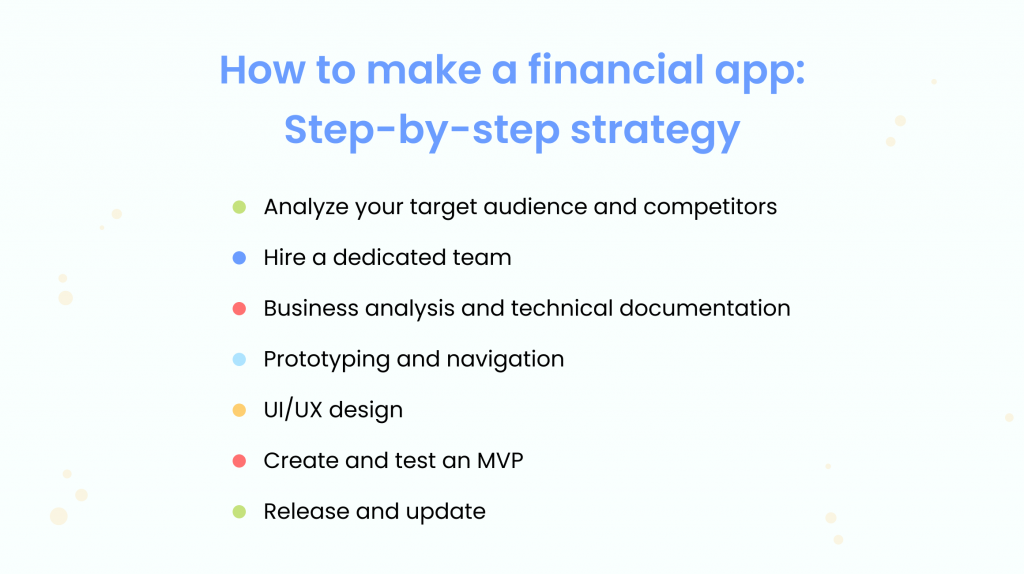How to Develop a Fintech App: Features, Trends, and Costs in Vietnam
F intech is an evolving industry that’s full of new business opportunities. Check out the article to learn everything you need to know about fintech app development, from features to the rough cost estimate.
he overall technological progress enhances a lot of business areas, and financial technologies are certainly part of that dynamic. Banks, insurance companies and trading platforms use digital solutions to facilitate their communication with clients and make operations easier to perform. There is no surprise that the fintech industry is growing fast and more people are downloading financial apps.
The pandemic has also influenced the situation in fintech. People quickly went digital and understood that finances don’t always require personal presence. Taking into account the expanding usage of technologies in the financial industry, there is no wonder people started wondering how to make a fintech app.
In this article, we’ll discuss the current state of the fintech market, the occurring trends for 2023 and beyond, and the number of resources needed for a successful project.

What is fintech?
Let’s start with the simplest part—what fintech is exactly. Financial technology (or fintech) is a broad term that covers all technological advances of the financial industry. Banking mobile apps, trading platforms, blockchain, contactless payments, NFT, financial data analysis—all these terms fall into the fintech category. A lot of people use such solutions without even noticing.
Although this term causes a lot of discussions, it isn’t a brand-new notion. At the beginning of this century, the term was used mostly for enterprise solutions, but with time, more customer-focused solutions appeared on the market. Today, the main goals of fintech are to facilitate the interaction with finances and to improve the relationship between financial institutions and customers.
It would be an understatement to say that the fintech industry is giant. CB Insights states that 41 fintech startups that are backed by venture capital are worth $154.1 billion. One of the deciding factors for the fintech market to be that voluminous is banks investing in and supporting technological development.
This business area has proved itself to be relevant in times of the pandemic. Online payments and mobile banking apps have become must-have solutions on people’s devices because they allow them to manage finances without leaving the house or interacting with other people.
Types of fintech apps
Because fintech includes a lot of business areas, it becomes easy to categorize these solutions into several types. Here are the most popular of them:

- Digital banking apps
These fintech apps are perfect solutions for those people who want to manage their finances and bank accounts as well as to conduct transactions quickly and without any personal interactions with other people. Web and mobile banks appeared to address these needs. Moreover, there are digital-only banks that entered the market, so traditional financial organizations started to create even more online solutions. With their help, people can open accounts, check the balance, make mobile payments and apply for a loan.
- Investment and trading apps
This type of fintech is used in various markets including stock, forex, and capital markets. With their help, you manage your investments and participate in the trading process. These solutions help you not just manage but make a profit out of your investments and trading deals.
- Consumer finances apps
These mobile apps may not include any payment or trading functionality because it isn’t really necessary for them. The main goal of such solutions is to help people save money and control their expenses. Additionally, users can plan their expenses in advance in order not to spend more than they need to.
- Insurance apps
The name speaks for itself here: These apps serve the insurance industry, both companies and clients. This type can include everything, from a simple CRM of an insurance company website to a mobile app for clients where they can see all of their insurance policies and take out another if needed.
- Digital wallets
We know several companies that offer their clients such functionality (PayPal, ApplePay). Their purpose is simple: To let users store their finances and make mobile payments. The most significant feature of digital wallets is security, so if you want to create a new service of this type, pay extreme attention to how the users’ finances are protected from fraud and unauthorized access.
- Regtech apps
Regulatory technology (or Regtech) is software that helps companies stay in compliance with all regulatory and legal statements. With these solutions, the company management can see the changes in laws and regulations, analyze transactions and monitor any type of risk. Additionally, the Regtech app should be able to detect fraud or unusual activities.
Here are more innovative types of fintech apps that you can pay your attention to:
- Peer-to-peer lending (P2P)
In P2P lending platforms, the loan application process is less painful compared to traditional banks. Here, lenders are usually investors who want to get a higher return than a traditional market can offer. Such platforms are also focused on security: They do a background check on any borrower for lenders to be sure about their investments. To monetize the service, P2P platforms charge a fee for the operations made via them. Peer-to-business (P2B) lending works in the same fashion.
- Alternative credit scoring
Traditional credit scoring is sometimes unfair to small businesses and freelancers. Due to the nature of their work, they may end up not eligible for a loan. Instead, the ones getting qualified are established businesses with a stable revenue flow or people with fixed-income jobs. That is why alternative credit scoring methods appear: To provide self-employed people and small businesses with the needed money. New methods like percentile credit scoring or social signals combined with machine learning can create a more friendly financial environment.
- Small ticket loans
It may be hard for people to find finances for big and expensive purchases like white goods, cars, or luxury items. Financial firms have noticed this issue and started paying more attention to the “buy now, pay later” services. They make purchases fast and less time-consuming. People will get small loans at a 0% interest rate without tedious filling out forms.
- Alternative insurance underwriting
Unfortunately, mistakes in premium estimates are made quite often. It happens that people of the same age, height, and weight can be guaranteed the same premiums without the consideration of other important factors. For example, such factors can include health routines and tobacco usage. Alternative insurance underwriting takes into account these aspects by gathering data based on lifestyle, medical history, and occupation. This information, paired with AI and ML, makes insurance products able to provide applicants with personalized insurance rates and payment options.
Reasons to build a fintech app
Fintech appeared as the answer to the demand for quick and reliable solutions that will help businesses quickly adapt to the changing environment. If you work in a financial institution and ponder about building a fintech solution, here is why it can be a profitable investment.
Digital transformation
Traditional banking considers fintech an important part of their work because it helps them stay afloat and build closer communication with their customers. However, not every financial institution is ready to invest in an in-house development team. It will require additional time and money spending, but not every bank has the resources for it. To stay focused on more relevant tasks, banks and other financial organizations hire third-party agencies that help with fintech app development.
New financial services
With fintech apps, companies can expand the range of their services with new digital options. The ability to make payments online and check bank accounts via mobile and web platforms are the most popular functions that fintech apps perform. Moreover, you can implement industry-specific features like applying for a loan or insurance or provide services for a specific audience.
Branding
A mobile or web application will contribute a lot to your brand recognition. You can use a whole new pool of marketing activities like personalized offers, gamification elements and loyalty programs based on data insights. Additionally, a neat design with a simple logo and a friendly UX will enhance the recognition of your solution and convey its value as a trustworthy service.
Enhanced customer service
A digital solution will let you stay in touch with your customers 24/7. If you implement chat functionality, customers will be able to receive almost instantaneous replies from your customer-service agents or chatbots. It will contribute a lot to your clientele’s loyalty and satisfaction.
Financial literacy
Because more people are becoming interested in investments, blockchain, and trading, it would be great to give them a trusted source of information. You can make it happen with your application. By providing relevant and up-to-date information about the financial world, you’ll earn their trust and motivate them to visit your services more often.
Fintech product-development trends
Now, when we know that the fintech market is thriving and your idea to build a fintech app has all the chances to become successful, let’s explore the most recent fintech trends. They’ll help you figure out how to stand out and attract more users.

Blockchain
This technology is quickly conquering the financial world and its usage is now way beyond cryptocurrencies. Blockchain’s potential is immeasurable so the number of opportunities is also hard to count. You can transfer important files via the chain and be sure that they aren’t forged or changed in any way. The most hyped blockchain topic is non-fungible tokens (NFTs). Although this technology is new and causes heated discussion, it grows in popularity.
Artificial intelligence (AI) and machine learning (ML)
The AI/ML fintech solutions have several advantages that they can offer to businesses. For example, your data scientist doesn’t have to be present all the time to constantly correct and improve the model because everything is automated. Additionally, the AI services can work with unstructured and mediocre data and still obtain insights that can be used by your company’s departments.
Advanced cybersecurity
It would be an understatement to say that security is an absolute priority for any fintech application. Any solution that works with private and corporate finances will require the usage of some sensitive data that must stay protected. Third-party agents should not have any access to user profiles that don’t belong to them. Moreover, fraud and suspicious activities should be discovered and terminated as quickly as possible.
Chatbots
Quick response to customer inquiries is one of the deciding factors in the user’s choice of a fintech service. To provide your clients with the quickest possible response, you can implement AI-based chatbots. They’ll be available 24/7 to answer the most frequent questions and give users the information they need. However, if there’s something the chatbot struggles with, it can redirect the customer to your live agents who can step in and resolve the issue.
Voice-recognition technologies
Although people can already type really fast on both desktop and mobile keyboards, people are looking for even faster ways to input search queries and ask questions. For now, the most efficient way is using your voice. Voice recognition is already a default feature of most smartphones and other smart devices. Fintech startups can use this opportunity and create a voice-based solution. For example, they can implement voice-enabled payments or integrate voice assistant support so they’ll remind people about payments and bills.
Real-time cross-border payments
Physical geographical borders aren’t sufficient reason for limiting financial transactions anymore. A person in almost any corner of the world can make a quick transaction to another corner of the world without downtime. A lot of banks and financial services have automated currency exchange, meaning you can make a payment in your local currency and it would be converted into another one in seconds.
Gamification
Gamification is an efficient way to retain customers. By adding gaming mechanics, you’ll encourage them to open your app and follow their progress. Gamification will also keep your clients emotionally engaged with your fintech app which improves your relationship with them.
A fintech app’s essential features
Since there are plenty of financial solutions that are already offered, people have certain expectations from a new player. To build a fintech app that will be welcomed by the audience, you must include in your application the following features:

- Sign-up/sign-in: Fintech apps should be protected from the client side so no stranger will be able to open the app. You can implement biometric or two-factor authentication for it.
- Dashboard: When a user enters the app, they should see all the necessary information on one screen. The most important thing here is to design a dashboard that will be both user-friendly and informative.
- Basic financial operations: These functions will depend on the type of app you want to develop.
- Security: This feature is extremely important for a fintech solution because all the user data should be safe and used by you exclusively.
- Payment gateway: Most financial applications facilitate various payments and transactions, so a payment gateway is a must for your project.
- Automated payments: Users should be able to automate routine and repetitive payments so they won’t forget to pay the bills.
- Personalization: Users should be able to adapt the application to their needs and preferences. The looks can be changed via settings, and artificial intelligence can help users customize the app’s content.
- QR code scanning: The feature of recognizing QR codes will significantly facilitate working with the app. Users can scan codes to make payments and transfer money from one account to the other.
- Push notifications: Your clients should receive reminders about upcoming payments so they can meet the deadline.
- Cross-platform capabilities: With the rise of mobile device usage, it will be a wise decision to create a fintech app that supports multiple platforms (web, mobile, IoT).
Fintech product development challenges
Although your fintech solution has all the potential to become a success, there are several risks that you have to take into account. When you learn about them, you’ll be able to prepare a plan to overcome or avoid them.
- Legal regulations
Fintech has to deal with a lot of sensitive and private information that comes from literally a crowd of people, and therefore governments follow this industry closely. Moreover, every country has laws that companies have to follow. So, before starting the fintech app development, make sure your future solution will comply with all the legal requirements including the international ones.
- Competition
The new members of the fintech market face strong competition. Besides small and medium startups that emerge almost daily and traditional banks, your rivals will include Big Tech companies like Google and Apple. They’ve launched financial solutions, and their products become popular because they have loyal audiences. So, to earn the trust of your potential users, you should offer something more convenient and unique.
- Security maintenance
We have already mentioned security several times, and it’s worth mentioning again. Security must be your top priority. Data should be protected from all types of cybercrime. An attack, if it succeeds, can lead to million-dollar losses and a jeopardized reputation, resulting in months and years of recovery.
How to build a fintech app: the step-by-step strategy
We have now organized the feature set, trends and risks of fintech app development, so we can discuss the strategy with which to meet your goal.

1. Analyze your target audience and competitors
When you decide to create a fintech app, first you’ll want to focus on solving users’ problems and standing out from the crowd of competitors. At this stage, you should thoroughly research the market and decide what you’ll offer.
2. Hire a dedicated team
If you have an in-house team with the necessary experience, you can move to the next step right away. However, if you need to hire an expert team, pay attention to their location, hourly rate, experience and reviews. Doing so will help you understand if you’ll work together smoothly.
3. Business analysis and technical documentation
The team of specialists will now help you understand the market more clearly and finalize the vision of your idea. Additionally, they’ll estimate your project and build a strategy that will include all the necessary steps and processes to complete the project successfully. Risk management is also included in this stage.
4. Prototyping and navigation
Prototyping is an important part of any software product development. Seeing the core functions and user flow without any decor elements will help you clearly understand if your app will be convenient to use. It’s better to start with simple sketches and then move to a clickable prototype.
5. UI/UX design
The prototype is ready, so now you can start creating a full-scale UI/UX design. The visual part of your application should be neat and eye-pleasing so users will feel positive emotions while using your app. Moreover, it’s important to balance UI and UX: Fancy visuals should not disrupt the user flow or draw too much attention.
6. Create and test an MVP
A minimum viable product, or MVP, is a necessary step in the development of a fintech product. It will provide the necessary feedback and insights on your solution so you can move forward or go back and fix the concept.When the MPV is ready, you need to test all its functions to make sure your users will get a functional application.
7. Release and update
Your app is now available to users. However, you’ll need to listen to what they say and add the necessary functions to make the app more convenient.
Technology stack
The exact tech stack needed to build a fintech app will largely depend on the type of your application, the particular specifications and the available budget. You can choose to create a native application for one platform or to build a cross-platform solution. Consequently, the tech stack for the latter will be different from that of the former. However, because most fintech apps have the basic tech requirements, we can offer an approximate set that can be used for your project:
- Backend: Java, Python, C++, Ruby, Kotlin, Swift, Laravel
- Frontend: React Native, Node.js, Angular, SpringNuxt.js, Vue.js, Ember.js
- Server: AWS
- Database: PostgreSQL, MySQL, MongoDB
- Payment gateway: Stripe, PayPal, Braintree
- API integrations: Syncfy Connect API, Plaid API, Plaid API, Twilio API, ShuftiPro, Apex
These are the most popular solutions for fintech apps. For a more accurate list of technologies that will suit your project, feel free to drop us a line.
What specialists are required?
The team composition for fintech mobile app development will vary depending on what features you want to implement, what platforms you plan to release on, and how fast you need your project to be done. Also, you will need to take into account the post-release maintenance. The minimum team composition for an MVP of a fintech app will consist of:
- Project manager
- UI/UX designer
- Mobile engineer (full-stack)
- QA engineer
If you want to move on and create a full-scale fintech app, you will need more team members. For an average-sized mobile app, you will require:
- Project manager
- Business analyst
- Mobile application architect
- UI/UX designer
- Backend engineer
- One or two frontend engineers
- QA engineer
The more complex your fintech app gets, the more work needs to be done and the bigger your team grows.
The cost of building a fintech app
The exact fintech development app estimate is hard to predict because every solution will differ from one another by requirements, scale and feature set. The team’s location and hourly rate matter too. However, we can provide you with an average estimate of a fintech platform.
| Step | Hours |
|---|---|
| Business analysis | 150-200 |
| Prototyping | 80-160 |
| Design | 120-150 |
| Backend | 120-200 |
| Frontend (one platform) | 520-600 |
| Quality assurance | 100-150 |
The numbers in this table aren’t completely accurate and can change depending on what you need your project to perform. If we consider a $50 hourly rate, the approximate cost of a fintech app development will be approximately $55,000 to $130,000. Drop us a line and we will provide an accurate estimate of your project.







